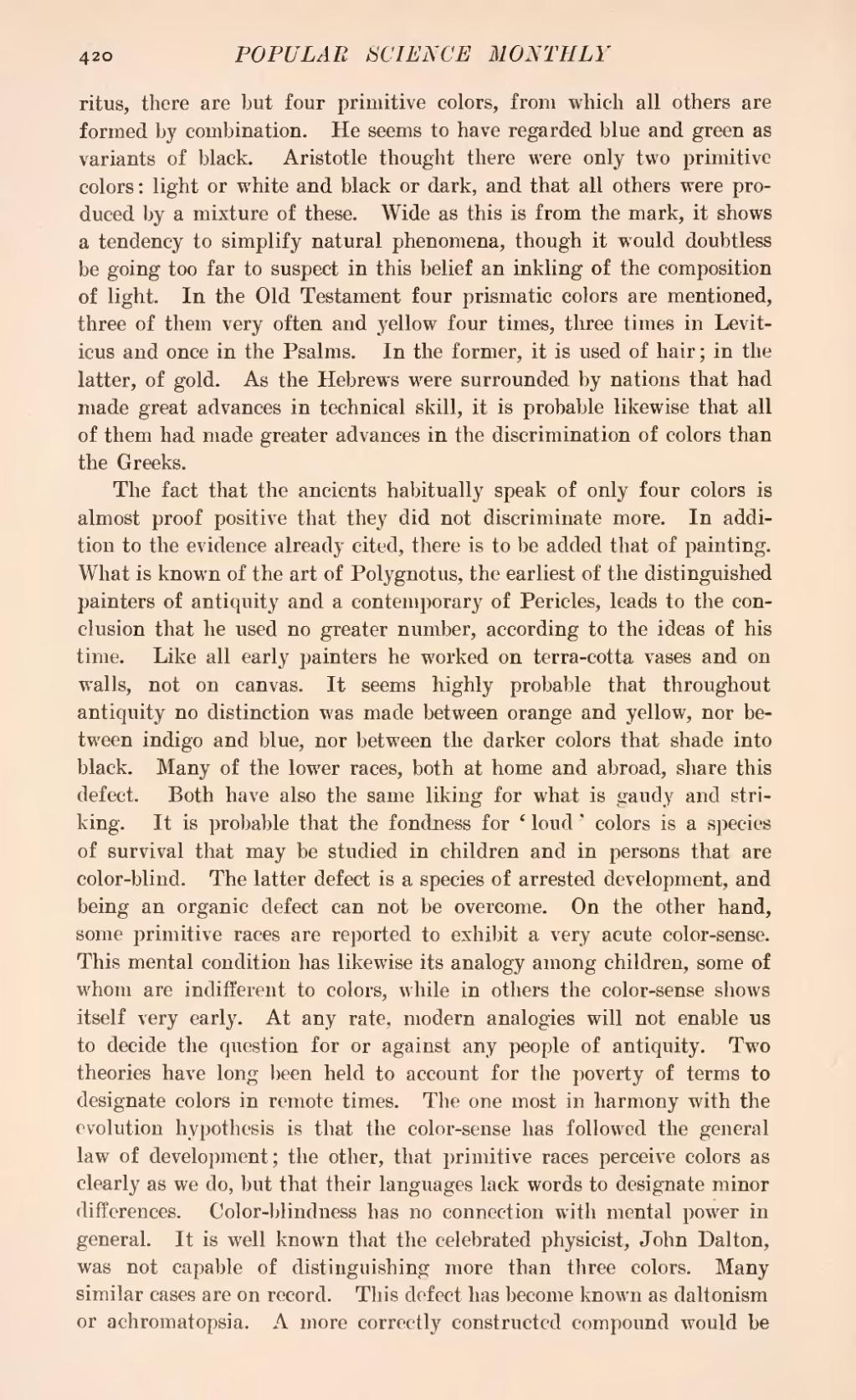ritus, there are but four primitive colors, from which all others are formed by combination. He seems to have regarded blue and green as variants of black. Aristotle thought there were only two primitive colors: light or white and black or dark, and that all others were produced by a mixture of these. Wide as this is from the mark, it shows a tendency to simplify natural phenomena, though it would doubtless be going too far to suspect in this belief an inkling of the composition of light. In the Old Testament four prismatic colors are mentioned, three of them very often and yellow four times, three times in Leviticus and once in the Psalms. In the former, it is used of hair; in the latter, of gold. As the Hebrews were surrounded by nations that had made great advances in technical skill, it is probable likewise that all of them had made greater advances in the discrimination of colors than the Greeks.
The fact that the ancients habitually speak of only four colors is almost proof positive that they did not discriminate more. In addition to the evidence already cited, there is to be added that of painting. What is known of the art of Polygnotus, the earliest of the distinguished painters of antiquity and a contemporary of Pericles, leads to the conclusion that he used no greater number, according to the ideas of his time. Like all early painters he worked on terra-cotta vases and on walls, not on canvas. It seems highly probable that throughout antiquity no distinction was made between orange and yellow, nor between indigo and blue, nor between the darker colors that shade into black. Many of the lower races, both at home and abroad, share this defect. Both have also the same liking for what is gaudy and striking. It is probable that the fondness for 'loud' colors is a species of survival that may be studied in children and in persons that are color-blind. The latter defect is a species of arrested development, and being an organic defect can not be overcome. On the other hand, some primitive races are reported to exhibit a very acute color-sense. This mental condition has likewise its analogy among children, some of whom are indifferent to colors, while in others the color-sense shows itself very early. At any rate, modern analogies will not enable us to decide the question for or against any people of antiquity. Two theories have long been held to account for the poverty of terms to designate colors in remote times. The one most in harmony with the evolution hypothesis is that the color-sense has followed the general law of development; the other, that primitive races perceive colors as clearly as we do, but that their languages lack words to designate minor differences. Color-blindness has no connection with mental power in general. It is well known that the celebrated physicist, John Dalton, was not capable of distinguishing more than three colors. Many similar cases are on record. This defect has become known as daltonism or achromatopsia. A more correctly constructed compound would be
